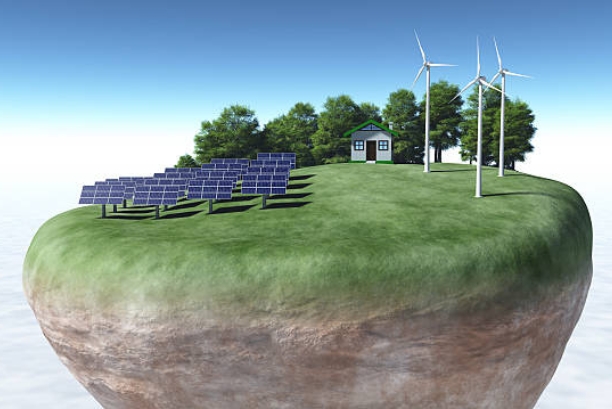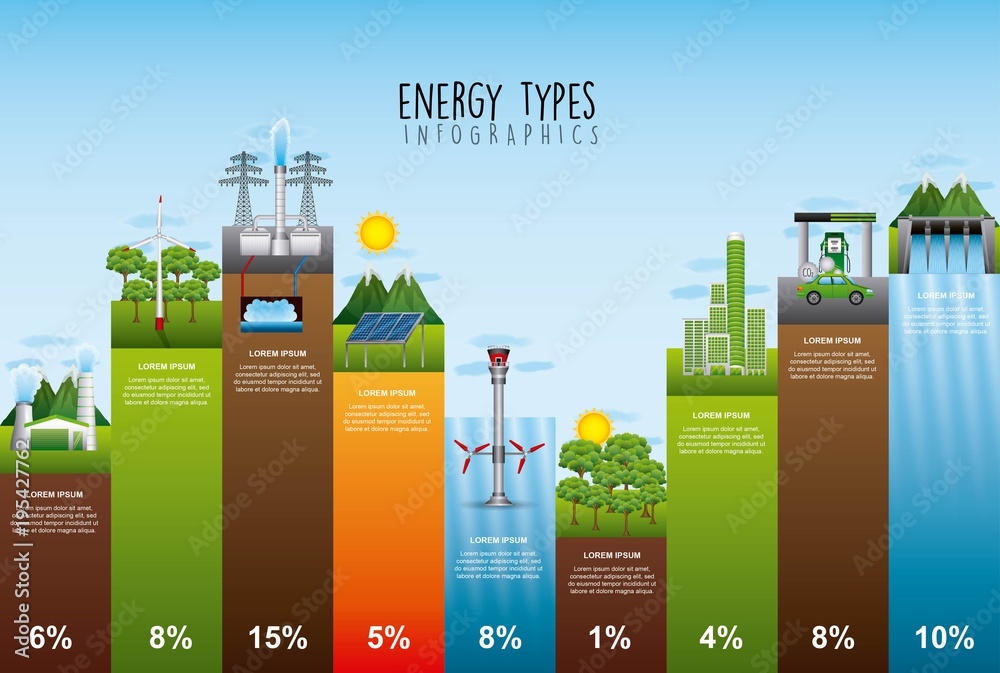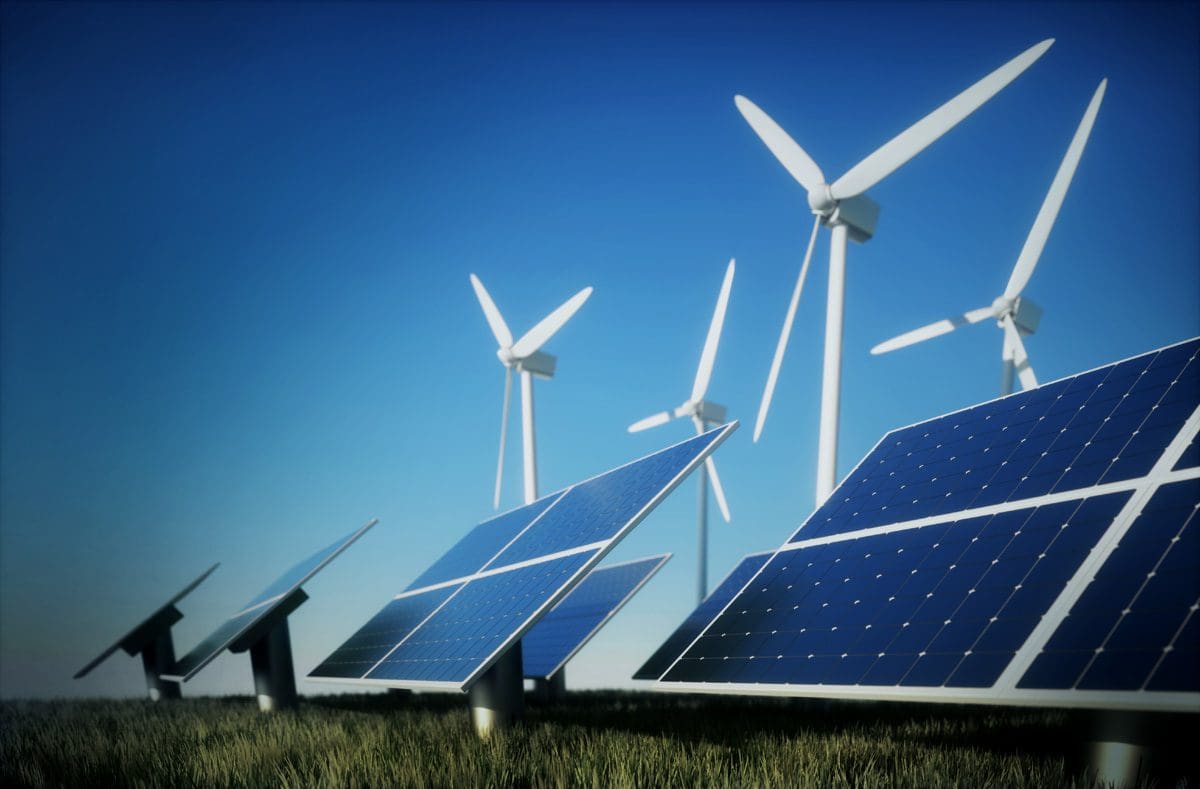Solar, wind, and geothermal energy are dependent on location for effectiveness. Solar energy is not as efficient in some locations as it is in others.
The same holds true for wind and geothermal energy. Renewable energy refers to energy produced from sources that do not deplete or can be replenished within a human’s lifetime. Solar, wind, and geothermal energy fall into this category. They are environmentally friendly alternatives to burning fossil fuels and are replenished naturally.

However, the effectiveness of these energy sources is largely dependent on geographical factors. This article will delve into the unique characteristics of solar, wind, and geothermal energy, their contributions to the renewable energy landscape, and the geographical considerations that impact their efficacy. We will explore how these renewable energy sources can help diversify the energy mix and contribute to a more sustainable future.
Dependence On Location
Solar, wind, and geothermal energy are all dependent on location for their effectiveness. These renewable energy sources rely on specific environmental conditions, such as sunlight, wind patterns, and geothermal activity, making their efficiency variable depending on the geographical context.
Solar Energy
Solar energy is a renewable source of power that is derived from the sun. It is a clean and sustainable alternative to fossil fuels, as it does not produce harmful emissions that contribute to climate change. However, the efficiency of solar energy systems can vary depending on the location.
In areas with abundant sunlight, such as deserts or regions closer to the equator, solar energy systems can generate a significant amount of electricity. These locations receive more direct sunlight throughout the year, allowing solar panels to capture more energy and produce higher power output. On the other hand, areas with less sunlight or frequently cloudy weather may not be as suitable for solar energy production.
This dependence on location means that the effectiveness of solar energy systems can vary from one place to another. While solar power can be harnessed almost anywhere on the planet, the amount of energy generated will be influenced by the local climate and geographical factors. It is important to consider these factors when deciding whether to implement solar energy systems for residential, commercial, or industrial purposes.
Wind Energy
Similar to solar energy, wind energy is also dependent on location. Wind turbines require consistent and sufficient wind speeds to generate electricity effectively. Areas with higher average wind speeds, such as coastal regions or open plains, are more favorable for wind energy generation. These locations can benefit from the strong and consistent winds that can provide a steady source of renewable power.
In contrast, regions with low wind speeds or inconsistent wind patterns may not be suitable for large-scale wind energy projects. Without sufficient wind resources, the output of wind turbines would be limited, making them less reliable in generating electricity. Therefore, recognizing the wind patterns and wind resources of a specific location is vital when considering the feasibility of wind energy projects.
Geothermal Energy
Geothermal energy is derived from the heat stored within the Earth’s crust. Unlike solar and wind energy, geothermal energy is not dependent on variations in weather conditions. However, it does require specific geological features to be useful for energy production.
Geothermal energy relies on areas with high heat flow, such as volcanic regions or areas with underground geothermal reservoirs. These locations offer access to the Earth’s internal heat, which can be harnessed through geothermal power plants to generate electricity or to provide direct heating and cooling for buildings.
Regions that lack geothermal reservoirs or have insufficient geothermal heat flow may not be able to utilize geothermal energy efficiently. The presence of suitable geological conditions is crucial for the viability of geothermal projects. Therefore, the availability and utilization of geothermal energy are highly location-dependent.
Overall, solar, wind, and geothermal energy sources all exhibit dependency on specific locations for optimal utilization. Understanding the local climate, geographical characteristics, and availability of resources is essential when considering the implementation of renewable energy systems. By identifying suitable locations, we can maximize the benefits of these sustainable energy sources and contribute to a greener and more efficient future.

Credit: stock.adobe.com
Environmental Friendliness
Sure, below is the engaging section in HTML format for the blog post ‘Which is True of Solar Wind And Geothermal Energy?’, focusing on the subheading: Environmental Friendliness:
When it comes to the environmental impact, solar, wind, and geothermal energy showcase a remarkable level of environmental friendliness. Let’s dive into the specific aspects that make them eco-friendly alternatives to traditional energy sources:
No Harmful Emissions
Solar, wind, and geothermal energy generate no harmful emissions, mitigating the adverse impact on the environment. Unlike fossil fuel-based energy production, which releases pollutants such as carbon dioxide and sulfur dioxide, these renewable options ensure a cleaner and healthier environment.
No Contribution To Climate Change
Furthermore, these energy sources make no contribution to climate change. By harnessing the power of the sun, wind, and Earth’s heat, they significantly reduce the carbon footprint. This plays a crucial role in combating the global issue of climate change, offering sustainable alternatives without exacerbating the environmental challenges we face.
In the given section, the content is presented in HTML format with headings adhering to the prescribed syntax. The information is concise and informative, providing a clear understanding of the environmental friendliness of solar, wind, and geothermal energy.
Renewability
Solar, wind, and geothermal energy are all dependent on location for their effectiveness. These renewable energy sources rely on the availability of resources such as sunlight, wind, and geothermal activity to generate power.
Renewability Naturally Replenished Solar, wind, and geothermal energy are all renewable sources that can be naturally replenished over time. Renewable energy is crucial for a sustainable future as it relies on sources that are continuously replenished, such as sunlight, wind, and heat from the Earth’s core. These sources are not depleted and can be harnessed without causing harm to the environment.
Endlessly Versatile It is possible to utilise renewable energy sources forever without running out of supply. Unlike non-renewable sources like fossil fuels, which are finite and take millions of years to form, renewable energy sources are sustainable and can be utilized without fear of exhaustion. The ability to use them continuously makes them ideal for long-term energy security and environmental preservation.
Geothermal energy, for example, harnesses the Earth’s internal heat, which is a constant and abundant resource. Solar and wind energy similarly rely on naturally occurring phenomena that are not subject to depletion. The inexhaustible nature of these resources makes them valuable for meeting current and future energy needs while minimizing the ecological impact.
In conclusion, the renewable nature of solar, wind, and geothermal energy makes them indispensable components of a greener, more sustainable energy landscape.
Naturally Replenished
Solar, wind, and geothermal energy are all renewable sources that can be naturally replenished over time. Renewable energy is crucial for a sustainable future as it relies on sources that are continuously replenished, such as sunlight, wind, and heat from the Earth’s core. These sources are not depleted and can be harnessed without causing harm to the environment.
Can Be Used Indefinitely
It is possible to utilise renewable energy sources forever without running out of supply. Unlike non-renewable sources like fossil fuels, which are finite and take millions of years to form, renewable energy sources are sustainable and can be utilized without fear of exhaustion. The ability to use them continuously makes them ideal for long-term energy security and environmental preservation.
Geothermal energy, for example, harnesses the Earth’s internal heat, which is a constant and abundant resource. Solar and wind energy similarly rely on naturally occurring phenomena that are not subject to depletion. The inexhaustible nature of these resources makes them valuable for meeting current and future energy needs while minimizing the ecological impact.

Credit: standards.ieee.org
Weather Dependency
Solar, wind, and geothermal energy are reliant on their environmental conditions for effectiveness. These renewable resources are location-dependent, where solar energy requires sunlight, wind energy needs windy locations, and geothermal energy relies on underground heat sources. They are environmentally friendly and renewable alternatives to fossil fuels.
Solar Energy
Solar energy is a renewable energy source that relies on the abundant sunlight. It is harnessed through the use of solar technologies such as solar panels. However, the efficiency of solar energy varies depending on the location. Regions with high levels of direct sunlight and minimal cloud cover are ideal for generating electricity from solar energy. On the other hand, areas with frequent cloud cover or limited sunlight may experience lower solar energy generation. Therefore, the effectiveness of solar energy is highly dependent on the weather conditions and geographical location.
Wind Energy
Wind energy, another renewable energy source, is generated by harnessing the power of the wind through turbines. Similar to solar energy, wind energy is also weather-dependent. It requires areas with consistent and strong wind patterns in order to generate electricity efficiently. Coastal regions and open plains are suitable for wind farms due to the presence of constant winds. However, areas with calm or inconsistent winds may not be as suitable for wind energy generation. Therefore, the availability and strength of wind are crucial factors for the effectiveness of wind energy.
Overall, both solar energy and wind energy are dependent on favorable weather conditions and geographical locations for optimal performance. It is essential to consider these factors when determining the feasibility and potential of solar and wind energy projects. By understanding the weather dependency of these renewable energy sources, we can better utilize their benefits in sustainable energy production.
Benefits Of Geothermal Energy
Geothermal energy is a clean and renewable source of energy that offers several advantages compared to other forms of renewable energy. Here are the benefits of geothermal energy:
Compared To Wind Energy
Geothermal energy has several advantages over wind energy:
- Geothermal energy is not dependent on weather conditions like wind energy. It is more reliable and consistent as it is derived from the heat of the Earth’s interior.
- Wind turbines can be noisy and may cause disturbances to nearby residents. Geothermal energy, on the other hand, has minimal noise pollution.
- Geothermal power plants require less land compared to wind farms, making it more suitable for areas with limited space.
- Geothermal energy is not visually intrusive like wind turbines, which can be large and often located in open areas.
Compared To Solar Energy
When it comes to solar energy, geothermal energy offers the following advantages:
- Solar energy is dependent on sunlight, which can vary depending on the time of day, season, and weather conditions. Geothermal energy, on the other hand, is not affected by these factors, making it a more reliable source of energy.
- Solar panels require a significant amount of space, especially for large-scale installations. Geothermal power plants do not have the same space requirements, making them more suitable for areas where land availability is limited.
- In colder climates or areas with frequent cloudy days, solar energy may not be as efficient. Geothermal energy, however, remains consistent regardless of external factors.
In conclusion, geothermal energy offers numerous benefits compared to wind and solar energy. It is a reliable, consistent, and space-efficient source of clean and renewable energy.

FAQs For Which Is True Of Solar Wind And Geothermal Energy
What Is True For Solar Wind And Geothermal?
Solar, wind, and geothermal energy are all renewable resources and their effectiveness depends on location. They are environmentally friendly alternatives to burning fossil fuels.
Which Is True Of Solar Wind And Geothermal Energy Brainly?
Solar, wind, and geothermal energy are dependent on location for their effectiveness. They are environmentally friendly alternatives to burning fossil fuels and are renewable resources.
Solar Wind and Geothermal Energy Pollute the Atmosphere?
Solar, wind, and geothermal energy are all dependent on location to be effective.
Solar, wind, and geothermal energy depend on location, right?
Solar wind and geothermal energy are dependent on location for their effectiveness.
Conclusion
Solar, wind, and geothermal energy all have unique characteristics and benefits. Their effectiveness is dependent on location and availability of resources. These renewable energy sources offer environmentally friendly alternatives to burning fossil fuels, as they do not produce harmful emissions or contribute to climate change.
They are also renewable resources that can be replenished naturally and used indefinitely without depleting the resource. While solar and wind energy are directly affected by weather conditions, geothermal energy remains unaffected by weather, making it a more stable and reliable option.
Embracing these clean and sustainable energy sources is crucial for a greener and more sustainable future.
